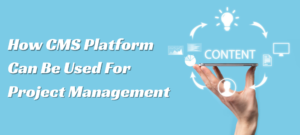Mobile Device Management Strategy: Steps & Tips
- 1 An MDM strategy is what?
- 2 What makes an MDM strategy crucial?
- 2.1 Better device support
- 2.2 Capability for tracking and remote locking/wiping
- 2.3 Increased adherence to corporate rules
- 2.4 Improved protection of intellectual property
- 2.5 Increased cost savings
- 2.6 How to create a Mobile device management strategy?
- 3 Determine the components of your MDM approach
- 3.1 Think about your company’s needs
- 3.2 Establish the positions and duties inside your organisation
- 3.3 Create guidelines for the use of mobile devices
- 3.4 How to maintain an MDM strategy
- 4 Mobile Device Management Tips
Smartphone ownership among adults has increased to 85%, and many people use them for business purposes, according to a new study. It has become crucial for IT environments to have a centralized management platform to handle the complexity of these devices as the number of mobile devices within businesses grows.
A software program called mobile device management (MDM) was created expressly to handle tablets and smartphones used by enterprises. MDM can be a useful tool for your IT team, especially if you have a solid MDM strategy in place.
An MDM strategy is what?
The actions an organization takes to manage mobile devices that are linked to the workspace are referred to as MDM (Mobile Device Management) strategies. Enrolling mobile devices, setting up limitations and configurations, and using MDM software to carry out remote activities on the devices are all required for this.
What makes an MDM strategy crucial?
Creating an MDM (Mobile Device Management) plan enables your company to use MDM software effectively. Important decisions on which devices will be handled, who will oversee carrying out specific activities, and when specific actions will be carried out can be determined by creating a plan.
The benefits of establishing an MDM approach are numerous and include:
Better device support
MDM can support mobile devices remotely. Instead of physically carrying out operations like deploying updates and managing apps, they can be finished with a few clicks.
Capability for tracking and remote locking/wiping
Any information on a device is at danger when it is lost. MDM can track mobile devices and, if doing so puts the company at danger, remotely lock or erase them. This makes it possible to preserve crucial work data continuously.
Increased adherence to corporate rules
Employer policies for the use of mobile devices are upheld thanks to the management of the work container on these devices. MDM can easily enforce rules on devices using the software, as opposed to relying on users to change settings and configurations to be compliant.
Improved protection of intellectual property
MDM enables you to safeguard and protect your important data. MDM software maintains the confidentiality of workplace information by imposing limitations and implementing configurations.
Increased cost savings
Utilizing MDM can increase device management’s efficiency and effectiveness, which will reduce costs associated with misplaced devices, lost data, and security breaches.
How to create a Mobile device management strategy?
Effective mobile device utilization within any organization requires a mobile device management (MDM) strategy. It is crucial to have a plan in place to handle the volume of mobile devices and their complexity given the steadily rising use of mobile devices in the workplace. Before implementing MDM software, several actions are required for an MDM strategy. The following steps can be used to develop a successful MDM strategy:
Determine the components of your MDM approach
The determination of which mobile devices need to be controlled and what kind of data will be accessible is the basis of an MDM strategy. The taking of all necessary actions is ensured by having a clear grasp of what is included.
Think about your company’s needs
Companies’ requirements for using mobile devices vary. Determining the specifics of your MDM approach depends on how your team will use mobile devices. This stage also assists you in creating a policy that permits mobile usage while upholding privacy and security.
Establish the positions and duties inside your organisation
Assigning roles and responsibilities to your IT team is crucial after you are aware of the devices that need MDM. This makes sure that everyone is aware of their responsibilities and that everyone is operating from the same page.
Create guidelines for the use of mobile devices
A mobile device usage policy that instructs your staff on how to use their devices safely and effectively should be part of your MDM strategy. Consequences for non-compliance and instructions on how your company’s data will be protected should also be included in this policy.
Implement a mobile device management system depending on the requirements of your organization.
A reliable MDM RMM software solution that can provide the capabilities your organization needs must be taken into consideration. This will make it easier to make sure that your mobile devices are connected to your broader IT infrastructure and are safe.
The management of mobile devices inside an organization requires a Mobile Device Management (MDM) strategy. It becomes simpler to guarantee mobile device security and privacy while promoting employee productivity if you have a clearly defined plan in place. By following these procedures, you can create a solid MDM strategy that covers all aspects of mobile device usage inside your business.
How to maintain an MDM strategy
To ensure that an MDM (Mobile Device Management) strategy efficiently serves the needs of the organization, it must be kept up to date and examined on a regular basis. It is critical to evaluate whether the plan supports mobile device management and protects corporate data.
It is also crucial to consider how the MDM solution influences the effectiveness of device management. When problems or inefficiencies arise, an existing approach and solution must be re-evaluated. It is a great chance to re-evaluate and make the required changes for effective use.
Mobile Device Management Tips
-
Understand what MDM can/cannot do
It’s important to comprehend the capabilities of mobile device management (MDM), which is a useful solution for managing mobile devices that are located remotely. MDM makes it possible for mobile devices, including phones, tablets, and other such devices, to be managed in terms of performance within an organisation. Additionally, it improves the security of the IT infrastructure in your company by imposing rules like remote lock/wipe and passcodes, which stop data exfiltration.
It’s crucial to remember that MDM has limits. For example, it is useless for managing larger computers like workstations and servers and is unable to handle mobile devices outside of the work container. Understanding these restrictions can help in selecting the best tactics for successful device management inside an organisation.
-
Determine Which Mobile Devices Will Have Access
Employees utilize their personal mobile devices at work in about 66% of cases. It’s crucial for an organization to decide which devices, if any, can access information connected to the workplace.
Making sure that the IT department is aware of who has access to business data is another essential component of mobile device management. Effective mobile device management requires constant monitoring and tracking of those who have access to sensitive data.
-
Consult MDM Reports
Reports from mobile device management (MDM) give useful information about which parts of the management process are working well and which ones need to be improved. It’s critical to frequently evaluate these data and find ways to improve performance, such enacting stricter or clearer device regulations. A successful MDM strategy can benefit from ensuring uniformity in the review procedure.
-
Use a solution that integrates with your existing IT tools
Consider using an MDM (Mobile Device Management) product that can interact with your current tools rather than relying on different software solutions to get a complete picture of your IT environment. Your toolkit can be made more comprehensive and unified by including MDM.
-
Using MDM in your organization
MDM, or mobile device management, is a crucial tool for safeguarding data and assets in corporations. The distinction between mobile devices that are diligently watched and those that are managed carelessly can be made by implementing a well-planned MDM approach.
Author Bio
Fazal Hussain is a digital marketer working in the field since 2015. He has worked in different niches of digital marketing, be it SEO, social media marketing, email marketing, PPC, or content marketing. He loves writing about industry trends in technology and entrepreneurship, evaluating them from the different perspectives of industry leaders in the niches. In his leisure time, he loves to hang out with friends, watch movies, and explore new places.

















